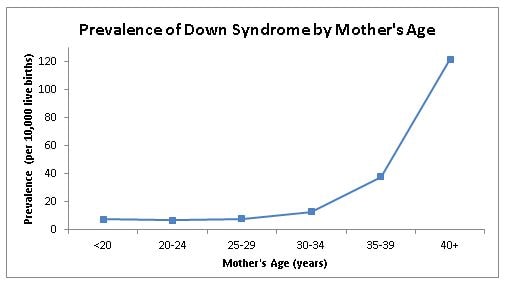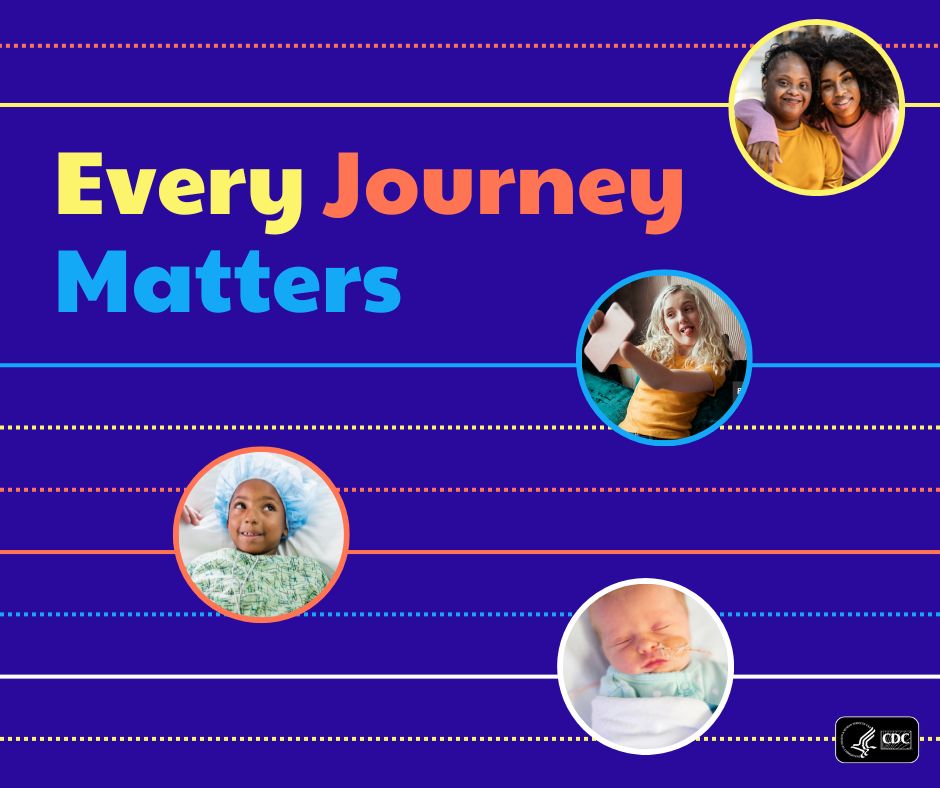Data and Statistics on Down Syndrome

In recent years, Down syndrome has become more common, and children with Down syndrome are living longer. Read below for recent statistics on Down syndrome in the United States.
How many people are living with Down syndrome in the United States?
Babies:
- Down syndrome continues to be the most common chromosomal disorder. Each year, about 6,000 babies are born with Down syndrome, which is about 1 in every 700 babies born.
[Read summary] - Between 1979 and 2003, the number of babies born with Down syndrome increased by about 30%.
[Read summary ] - Older mothers are more likely to have a baby affected by Down syndrome than younger mothers. In other words, the prevalence of Down syndrome increases as the mother’s age increases. Prevalence is an estimate of how often a condition occurs among a certain group of people. To estimate the prevalence of Down syndrome, the number of pregnancies affected by Down syndrome is compared to the total number of live births.
[Read summary ]

Children and Adults:
- In 2002, about 1 out of every 1,000 children and teenagers (0 to 19 years old) living in the United States had Down syndrome. This means that in 2002 about 83,000 children and teenagers were living with Down syndrome.
[Read summary ] - Researchers estimated that in 2008 about 1 out of every 1,200 people (children, teens, and adults) living in the United States had Down syndrome. This means that in 2008 about 250,700 children, teens, and adults were living with Down syndrome in the United States.
[Read summary ]
What is the life expectancy for people with Down syndrome?
- The life expectancy of people with Down syndrome increased dramatically between 1960 and 2007. In 1960, on average, persons with Down syndrome lived to be about 10 years old. In 2007, on average, persons with Down syndrome lived to be about 47 years old.
[Read summary ] - Many factors can affect how long a person with Down syndrome lives.
- Sometimes infants with Down syndrome are born weighing less than 1,500 grams, or about 3.3 pounds. This is called “very low birth weight.” These babies are 24 times more likely to die in the first 28 days of life compared to infants with Down syndrome of normal birth weight (between 2,500 grams and 4,000 grams, or between 5.5 and 8.8 pounds).
[Read summary ] - Black or African-American infants with Down syndrome have a lower chance of surviving beyond the first year of life compared with white infants with Down syndrome. More research is needed to help understand why.
[Read summary ] - Infants with Down syndrome who also had a congenital heart defect (CHD) were five times more likely to die in the first year of life compared to infants with Down syndrome who did not have a CHD.
[Read summary ]
- Sometimes infants with Down syndrome are born weighing less than 1,500 grams, or about 3.3 pounds. This is called “very low birth weight.” These babies are 24 times more likely to die in the first 28 days of life compared to infants with Down syndrome of normal birth weight (between 2,500 grams and 4,000 grams, or between 5.5 and 8.8 pounds).
- Between 1983 and 2003, about 93% of babies born with Down syndrome survived to one year of age. In the same time period, about 88% of babies born with Down syndrome survived to 20 years of age.
[Read summary ] - The number of infants with Down syndrome that die before one year of age has declined over time. For example, between 1979 and 2003, among babies with Down syndrome, the rate of death during the first year of life declined from 8.5% to 5.0%, a decrease of about 41%. For comparison, the rate of death during the first year of life among all babies in the general population declined from 1.5% during 1979-1983 to 0.9% during 1999-2003, a decrease of about 40%.
[Read summary ]
What other health conditions affect people with Down syndrome?
- About 50% of all babies born with Down syndrome are also born with a congenital heart defect. Babies with Down syndrome can be affected by a wide variety of heart defects. Many of these conditions will need surgery, while some milder heart defects might go away on their own as the child grows and may only need to be monitored by a healthcare provider.
[Read summary ] - Compared to children without Down syndrome, children with Down syndrome are at higher risk for:
- Hearing loss (up to 75% may be affected)
- Obstructive sleep apnea, a condition where a person’s breathing temporarily stops while asleep (between 50 -75%)
- Ear infections (between 50 -70% may be affected)
- Eye diseases, like cataracts (up to 60%)
- Eye issues requiring glasses (50%)
- Heart defects present at birth (50%)
- Intestinal blockage at birth requiring surgery (12%)
- Hip dislocation (when the thigh bone slips out of the hip socket) (6%)
- Thyroid disease (a problem with metabolism) (4-18%)
- Anemia (red blood cells can’t carry enough oxygen to the body) (3%)
- Iron deficiency anemia (red blood cells don’t have enough iron to carry oxygen to the body) (10%)
- Leukemia (1%) in infancy or early childhood
- Hirschsprung disease (an illness of the gut that can cause constipation) (<1%)This article includes the American Academy of Pediatrics Health Supervision for children with Down syndrome from 2011.
[Read summary ]
For more health care information for families of children with Down syndrome
- Older adults with Down syndrome have increased risk for developing Alzheimer’s disease.
[Read summary ]
What are the healthcare needs and costs for people with Down syndrome?
- Among children aged 0-4 years with private insurance, average medical care costs were 12 times higher for children with Down syndrome compared to children of the same age without Down syndrome.
[Read summary ] - For infants with Down syndrome, those born with a heart defect had, on average, health care costs that were five times higher in the first year of life than for infants with Down syndrome who did not have a heart defect.
[Read summary ] - A study used data from the 2005-2006 National Survey of Children with Special Healthcare Needs (NSCSHN) to look at the effects of Down syndrome on families. Responses from the NSCSHN questionnaire indicated the following:
- Nearly 60% of families of children with Down syndrome provided health care at home. Health care included practices such as changing bandages, care of feeding or breathing equipment, and giving medication and therapies.
- Over 40% of families of children with Down syndrome had a family member who stopped working because of the child’s condition.
- About 40% reported the child’s condition caused financial problems.
[Read summary ]
